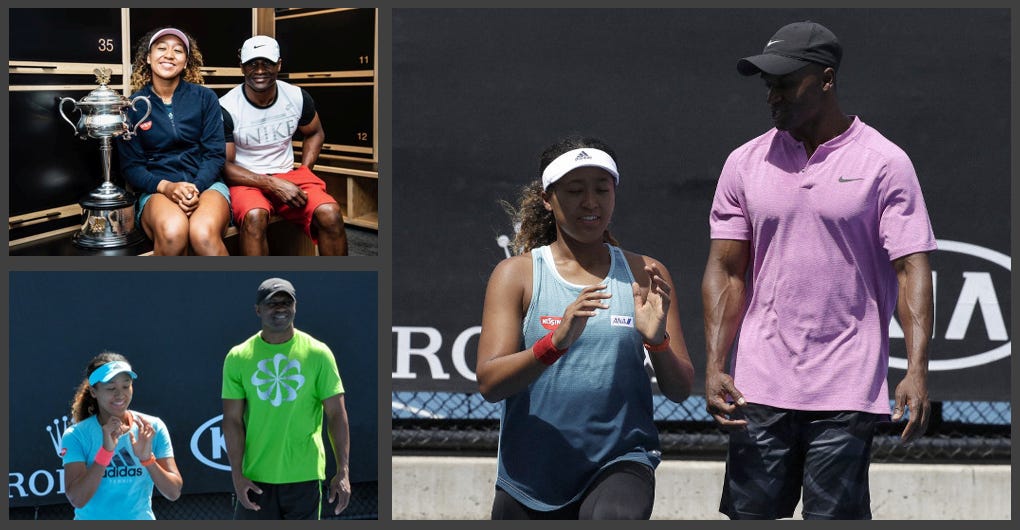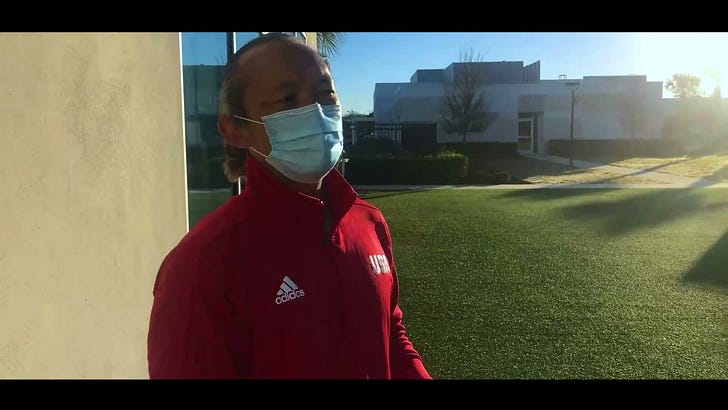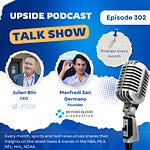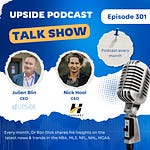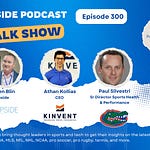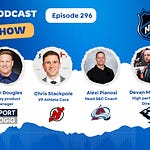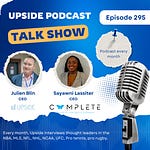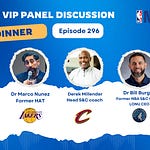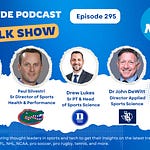Today we have the honor to interview Abdul Sillah, a world's class high performance coach who has worked with top athletes such as top tennis players, like Serena Williams, Naomi Osaka, Sloane Stephens, Bianca Andreescu. He also worked with MLB/NFL players.
Prior to becoming a high performance coach, he was a competitive athlete for over twenty years. Unfortunately, his career ended sooner than planned after a harrowing injury. As a result, he now devotes the rest of his life to helping others achieve what he was unable to do.
Abdul worked for 10 years with Serena Williams, an American former professional tennis player. Widely regarded as one of the greatest tennis players of all time she was ranked world No. 1 in singles by the WTA for 319 weeks, including a joint-record 186 consecutive weeks, and finished as the year-end No. 1 five times. Serena won 23 Grand Slam women's singles titles, the most in the Open Era, and the second-most of all time.
Picture: Abdul Sillah, Serena Williams
Abdul worked with Naomi Osaka, a Japanese professional tennis player who has been ranked world No. 1 in singles by the Women's Tennis Association and is the first Asian player to hold the top ranking in singles. Osaka is a four-time Grand Slam singles champion, with two Australian Open and two US Open titles.
Picture: Abdul Sillah, Naomi Osaka
Abdul has also worked with Aaron Hicks, professional baseball player who played for the New York Yankees (MLB).
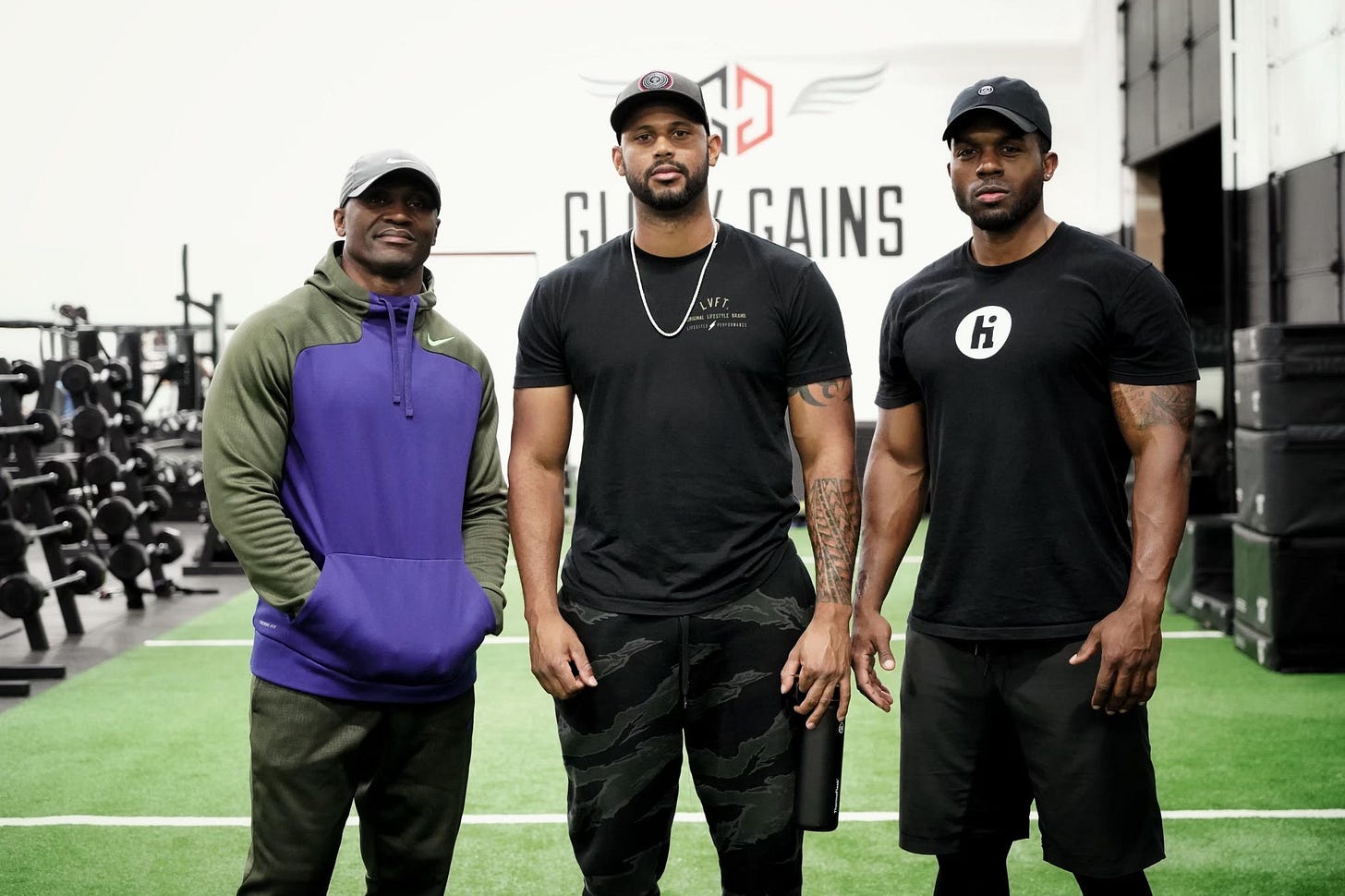
Picture: Abdul Sillah, Aaron Hicks
📝Show Notes: Through this interview, we touched on his background, how he ended up working with top athletes like Serena Williams, Naomi Osaka, Sloane Stephens. We will also talked about his philosophy when it comes to strength and conditioning, the importance of the mental preparation for an athlete. Then we discussed the importance of technologies in his line of work and what type of technology he would build if he had unlimited engineering and financial resources.
Best Quotes: Here’s some of the key discussion points and best quotes from our conversation with Abdul:
On his background:
“I come from the world of American football and track and field. And I sustained a serious injury, which caused paralysis. And then my wife actually gave me an ultimatum: football or family. So I decided to choose the family”.
“And this was just at the beginning of me trying to get into the NFL. This was in 2000-2001. Okay. And so for me, that's actually the best thing that could ever happen to me because it gave me a purpose in this life that probably playing football would have never given me”.
On how he ended up working with top athletes like Serena Williams:
“So, at the genesis of my career, where I had just hung it up for football, and this was in 2000 and now three years later, in 2004, I was out there working with one of my other athletes, which was a professional boxer, and this was about 6 AM in the morning”.
“And as we're working out, a gentleman came by and shook my hand and introduced himself. And he said, would it be possible to just watch you all train? I say, yeah. And so he watched for about 15 minutes and then he told me, you're the best trainer I've ever seen in my life. I said, Oh, thank you, sir”.
“He said, no, I mean it. You're the best trainer I've ever seen in my life. I said, okay. So he said, well, I'm going to leave and go for my walk and I'll be back. And then he did as well. He came back and he watched a little bit more than he said, Hey, I'll be back around nine. Would you be here? I said, yes”.
“So what I didn't know was that that was Serena's uncle. So he went back and spoke to Mr. Williams. This is before fitness was in tennis. There was no fitness. There was no high performance coaching. So he told Mr. Williams about me. And then from far away later on out, which I didn't know, Serena was injured at the time. She was recovering from a knee surgery and coming back”.
“And she came there for the Bank of the West tennis tournament at Stanford to watch her sister play. And I saw her play at the Stanford tournament. It was in 2004 at that time. And during that time, Mr. Williams was watching from far away. I didn't know that”.
“And then after she finished doing some laps, Mr. Williams asked her to come ask me if she could join into the group. At that point, the boxer had gone home and I was doing speed clinic with a few NFL players. And then, she asked me, I said, Oh yeah, please join in. So she joined in and that's basically how everything started”.
On how Richard Williams asked him to work with Serena Williams and took a chance on him:
“And later on, Mr. Williams asked me, would it be possible to work with my daughter by herself instead of with everybody? So I did that. And then he told me, Abdul, I said: yes, sir. He said, I can get my daughters to hit a penny anywhere in that court”.
“He said, I can do that. But answer me a question. If they cannot get to the ball, how are they going to hit the penny? So your job is to find a way to get them to be able to be in position to hit that penny every time. So that's how everything started. So he took a chance at me and he knew nothing about me and that was just like, I'm just learning at that point how to actually teach someone else to perform at the highest level (..) So I ended up working with Serena for 10 years”.
On how he kept his work with Serena Williams private:
“In the tennis world, people didn't really know that I worked with Serena because I kept it quiet. If I was going to take on a project, I wanted it to be on my own merit, not because, first and foremost, we might not have chemistry and I don't want you to trust me just because I work with someone else”.
“Whatever works between me and her, me and this person might not work between you and me because before I take on any project, I need to know who I'm dealing with. I need to know the human being, not the athlete, because athletes are a human beings first. Yeah, I need to understand that and you have to have that humility for me to actually think about the project”.
On the fact that he worked with Sloane Stephens when she won the US Open Tennis in 2016 and 2017 as well as Aaron Hicks from the NY Yankees:
“I worked with Sloan first, and this was from 2016 to 2017. We won the US open together and then I started working with Aaron Hicks who played for the Yankees at the time. And I had just started with him because Sloan won and we went our separate ways right after that. And then Aaron called me to see if I could work with him in the offseason. That was at the end of October”.
On how he ended up working with Naomi Osaka:
“So as the process was going on with Aaron, they called me about this young lady.
Nobody knew who she was. She was, I think ranked 90 in the world or something like that. And they sent me a picture of her. I looked at it, I said, I really want to retire. My goal was to retire with Serena because we started together. I wanted to actually end my career with her”.
“And then Aaron Hicks looked at me and said, Abdul. I said, yeah. He said, I thought you said that you like starting with people from the bottom and you like to help get them back get them to the top, the ones that are struggling. You are doing the same thing with me now. We just started talking. He said to me: Why don't you do what you did with Serena. Why don't you do that with this young lady? At the time Naomi Osaka was I believe 18, 19 years old back then. And he said, that would be a better situation because then the both of us can grow together at the same time”.
“I said, okay, let me think about it. And then he made some great points about it. I said, okay, so I called her and say, yeah, I'll take on the project. And so I watched some films on her. I studied her because I didn't know who she was. A few years before that, in 2016, 2015, I actually went and watched her at the Bank of the West when I was working with Serena”.
“And because I saw this young black lady with her parent, her dad and her sisters, and I watched them and I introduced myself to the dad. I'm like, “I work with Serena, if there's anything I can do for you guys, please let me know. And that was in 2015”.
“And fast forward. Now when I met her, I told her the story. I said to her, I watched you guys. You don't remember me, huh? She said, nah. I said, ask your dad. So that's how that went. Because of Aaron, I was able to take on that project and see if I could repeat the same process again, the work I did with Serena, and Sloane”.
On the fact that he takes more pride in helping athletes from a lower level all the way to the top:
“I do not care about my resume, whether I have a setback with an athlete or we succeed, it doesn't matter to me, as long as I keep working with them and trying to figure out how to get them to achieve their highest potential”.
“So that's why I love the challenge of getting someone from the bottom to the top. Helping another human being achieve what they don't think was possible and see that joy and that smile on their face, especially when mine was taken away from me”.
On the fact that athletes need to be humble to learn:
“So it's a give and take. Now if you humble yourself and say, you know what, I want to get to the top. How do I do this? I need someone to guide me, right? Then you are able to be teachable and every successful or supreme athlete humble themselves in order for them to be great”.
“For instance, I'll give you an example with me and Serena. When we first started, I gave her one instruction. I said “no headphones ever. When we train, no headphones, period”. Because when you're playing, you don't need motivation. There's no music in your ears to motivate you. When I first started, I had very strict rules because that's how I was trained”.
“And fast forward, 10 years later, Serena won the Bank of the West and we're cooling down, and what shocked me was when Serena told me “Hey, Abdul, could I please wear the headphones, even just one side because that would be my reward? That's humility. She never forgot what we talked about and she always used that. And that was at the beginning of our relationship when we first met. And that's where she's at. Because she doesn't think she's big or she knows it all”.
On the importance of mental preparation in sports like tennis:
“People say mental preparation is 90%. I believe it's 95% to 98% of the work. And if you give me someone that is great at playing tennis, and give me someone that's average, but I worked with that athlete to develop his/her mental toughness, I promise you the person that I helped improve his/her mental toughness is going to destroy the person that is just physically talented”.
On the fact that pro tennis players like Novak Djokovic are so strong mentally:
“Novak doesn't get rattled. When Novak gets rattled, it means someone else is playing the mental game. Most of the time, you see him and you could see what's happening in his head”.
“Everybody else is going through chaos, but for Novak, everything is slowing down in his mind and it's like, you could see the calmness and he's just waiting for you, no matter how difficult you're making things for him physically”.
“He's patiently waiting for you to break down because mentally you are going to break down and he's going to be exactly where he wants to be at. So that's the difference between where he's at and what he's doing to me versus everybody else. That’s his mental capacity, his mental development. Then he has taken it to a whole new level”.
On his belief that you could take an athlete, and make him/her a champion on a tennis court:
“I promise you that a person that you think is the worst tennis player, is going to become something that people are going to fear on the tennis court. If you give me some time with that person that’s going to change. And it's the same thing in boxing. Boxing is where I started out. So when you look at it. You start realizing that all human beings have one thing in common, especially competitive human beings. And that is the mind”.
“If you can get to the mind of that human being. It is about building confidence in this human being and showing that no matter what happens, you still love them. It doesn't matter what happened. You're still going to be there for them. You're never going to abandon them because something has happened to them, they've been abandoned or they've been told something about them that wasn't good. So they're holding on to this”.
“As long as they know they have a backboard behind them, a solid backboard and they built this confidence, they're going to go out there when they look up in the stands and they see you, they are willing to die on that on that battlefield for what you guys have been putting in. That's all it is”.
On Serena Williams and Naomi Osaka and their character:
“I always say there's good stubbornness, there's good arrogant, and there's bad stubbornness and bad arrogance. And Serena has good arrogance. She is arrogant enough to say that I'm better than you”.
“When we get on the court, I'm better than you off the court. I don't need to do anything. I just need to be who I am. I'll carry myself as a champion and have that aura about me. But I'm still going to talk to everybody else. I'm still going to be who I am, and be a human being to people”.
“That's how she was raised. And that's how Naomi also is. And I've been blessed to be around a lot of these athletes that have been like this. God bless me to be around all these folks that I've worked with have been the same”.
🔥Upside Video Chat: Satoshi Ochi, Head of Strength and Conditioning Coach at the USTA
Sports organization profiled: USTA National Training Center Headquarters Location: Orlando, FL (USA) Background: 2017 was the year USTA National Campus in Orlando was built. The USTA Player Development unit has been created to identify and develop the next generation of American champions by surrounding the top junior players and young pros with the resou…
🔥Upside Chat with Thad Young, NBA Player (Toronto Raptors), Investor, Entrepreneur, and Philanthropist
Listen now (41 mins) | Dear colleagues, This week we are kicking off a new series where each month we plan to interview athletes and coaches across major pro teams and leagues (MLS, NBA, NFL, MLB, NHL, NCAA, European soccer, South American soccer, pro rugby, pro tennis, pro cricket, Olympic teams..). The goal with each athletes and coaches is to highlight their background, th…
🔥 Upside Chat: Machar Reid, Innovation Lead (Tennis Australia)
This week we have the honor to interview Machar Reid, the head of Innovation of Tennis Australia who owns the Australian Open Tennis, and the new tech fund Wildcard Ventures. 📝Show Notes: Through the interview, we talked about Tennis Australia, his role in the organization including the Australian Open tennis and his new tech fund called Wildcard Ventur…
🔥Upside Chat: Eddie Jones, Head Coach of England National Rugby Team
This week we had the honor to interview Eddie Jones, the head coach of England National Rugby team. Eddie Jones is an Australian rugby union coach.
🔥Upside Chat: Justin Forsett, Former NFL Player (Ravens/Seahawks), CEO of Hustle Clean, A Self Care Brand For Active Lifestyle on His Journey From the NFL to Shark Tank
This week we interviewed Justin Forsett a former NFL running back turned entrepreneur. He is now the CEO of Hustle Clean, a self care brand for the active lifestyle. Justin has played for 9 years in the NFL for a number of NFL teams such as the Seattle Seahawks, the Colts, Houston Texans, Jacksonville Jaguars, Baltimore Ravens, Detroit Lions, and Denver…




